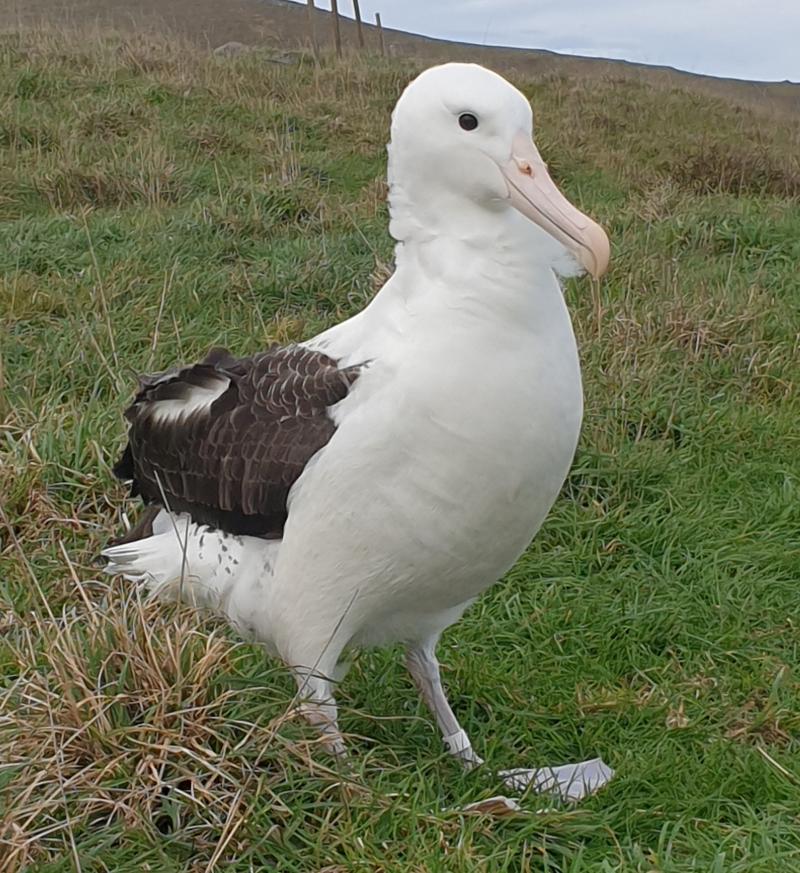
The setting sun over Gough Island’s West Rowett lights up a Tristan Albatross in the Gonydale monitoring colony
NOTE: This is the seventh in an occasional series that features photographs of the 31 ACAP-listed species, along with information from and about their photographers. Here, Michelle Risi writes about the Critically Endangered and near-endemic Tristan Albatross Diomedea dabbenena which she has monitored and photographed on Gough Island over three seasons.
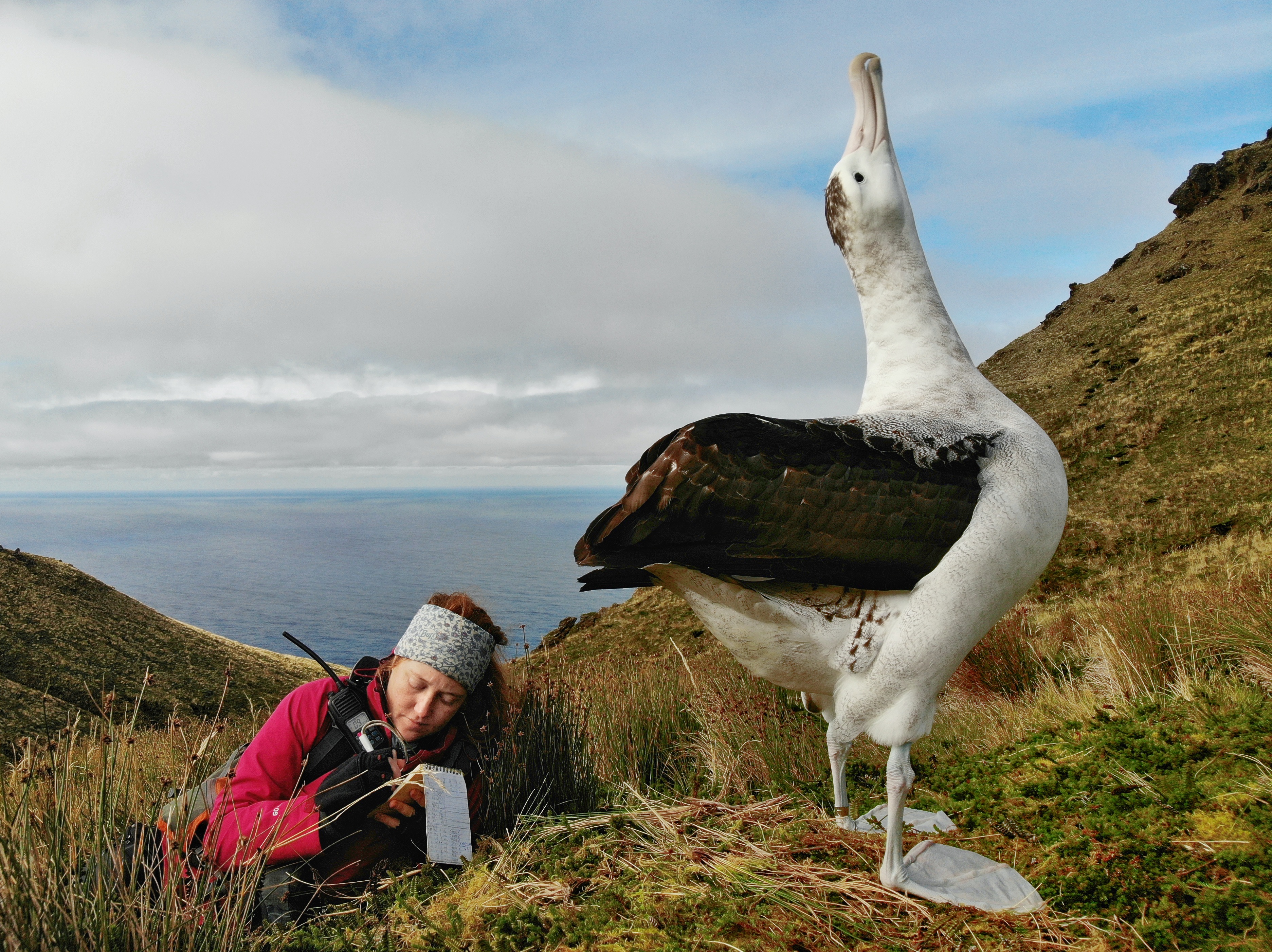
Michelle Risi records the band number of a displaying Tristan Albatross on Gough Island; photograph by Chris Jones
Having focused my Master’s degree in the intertidal zone on the KwaZulu-Natal coast of South Africa, I must confess that albatrosses were not on my radar. I was incredibly lucky to make my way in 2014 to Gough Island in the South Atlantic, along with my now husband Chris Jones, as the conservation officer. My main aim was to fight the invasive plant Sagina procumbens and do some bird monitoring work on the side. Little did I know then that seabirds would become a true steering force in my life. Ever since 2014 I have spent most of my time on far-flung islands working to study the amazing animals that live there and contribute research to the global efforts to protect the species that call these islands home. I always have a camera on me and have been privileged to capture so many photos of these incredible birds, but it’s really not difficult when something so big and beautiful comes up to you simply begging to be photographed!
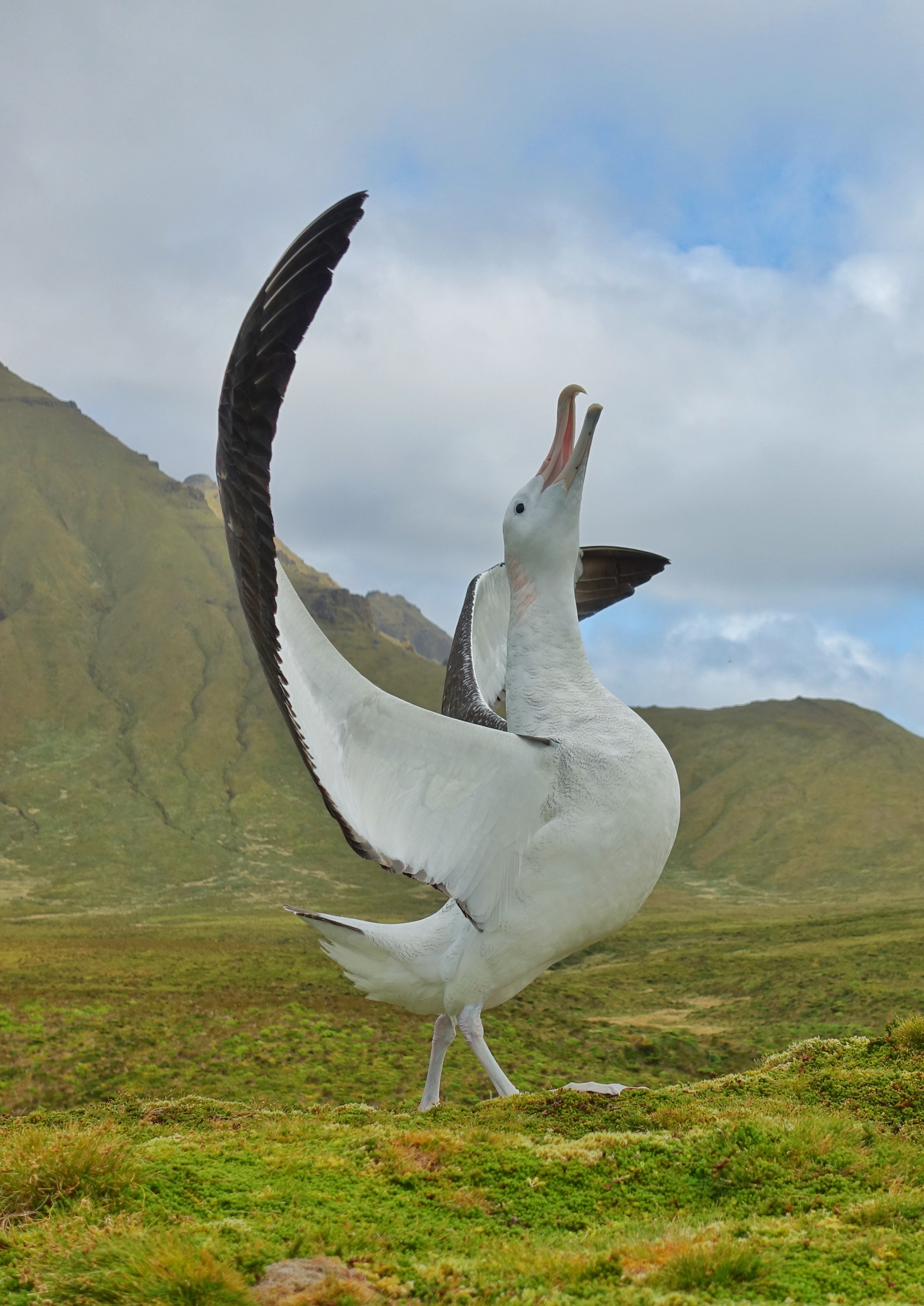
Sky Point. An adult male Tristan Albatross displays
Of the last seven years, just under four of those have been spent on Gough Island. After my first overwintering on Gough in 2014/15, I returned in 2018 as a field assistant to be a part of the mice eradication project. The baiting phase was initially planned to go ahead in 2019 but was postponed to 2020 to allow for a solid logistical planning phase. I stayed on Gough for two consecutive years to then be on the island in 2020, but our hopes were thwarted again due to the COVID-19 pandemic, which made it impossible for the rest of the team to travel to Gough with the global hard lockdowns in place. So it is with huge satisfaction that I am currently typing this after returning from Gough in August 2021, having been part of the eradication team and witnessing the successful completion of the baiting phase of the project earlier this month.

At risk to mice no more? A Tristan Albatross chick in the Gonydale monitoring colony in Gough’s highlands
After monitoring the dismal breeding success of the Critically Endangered Tristan Albatrosses for three seasons and watching countless chicks die after having mouse wounds, it was an extremely emotional moment when we visited the Tafelkop monitoring colony in July this year after the first bait drop by the Gough Island Restoration Programme had been completed and not a single nest had failed in the intervening period, especially as the majority of mouse attacks happened during this time in previous seasons. Tristan Albatrosses hold a special place in my heart so I look forward to following the monitoring updates of this species on a now hopefully mouse-free Gough Island.
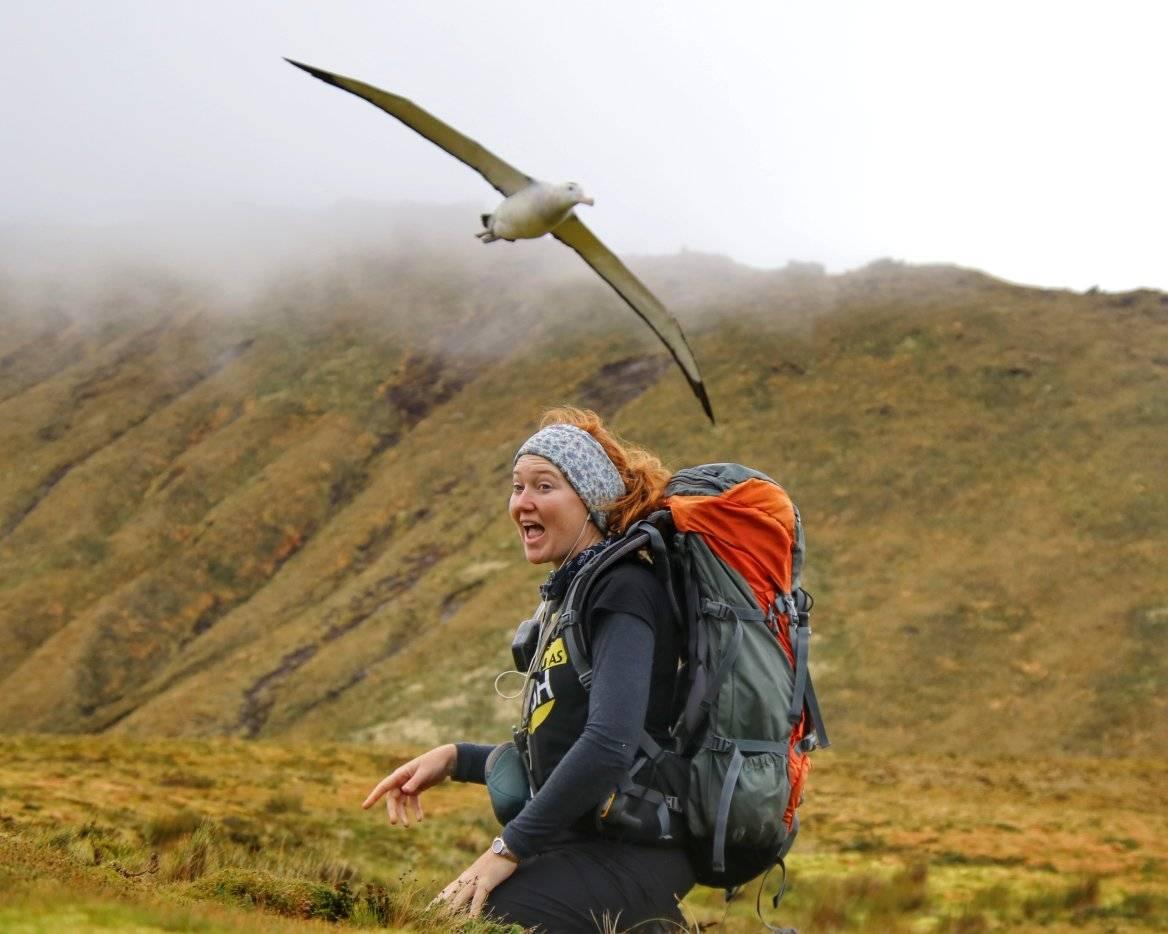
Celebrating the bait drop. A Tristan Albatross flies over Michelle in a moment of excitement; photograph by Chris Jones
All photographs by Michelle Risi unless stated
I also look forward to celebrating World Albatross Day on the 19th of June each year. The idea for this day was initially suggested by me to the Agreement on the Conservation of Albatrosses and Petrels (ACAP) to raise awareness for albatrosses and the various challenges they face. It is impossible to work with albatrosses and not fall in love with them, so the next step is to bring albatrosses to the world and make everyone else fall in love with them. We need everyone to get behind the initiatives that are in place to protect these birds, such as fighting illegal fishing, climate change, plastic pollution and invasive species.
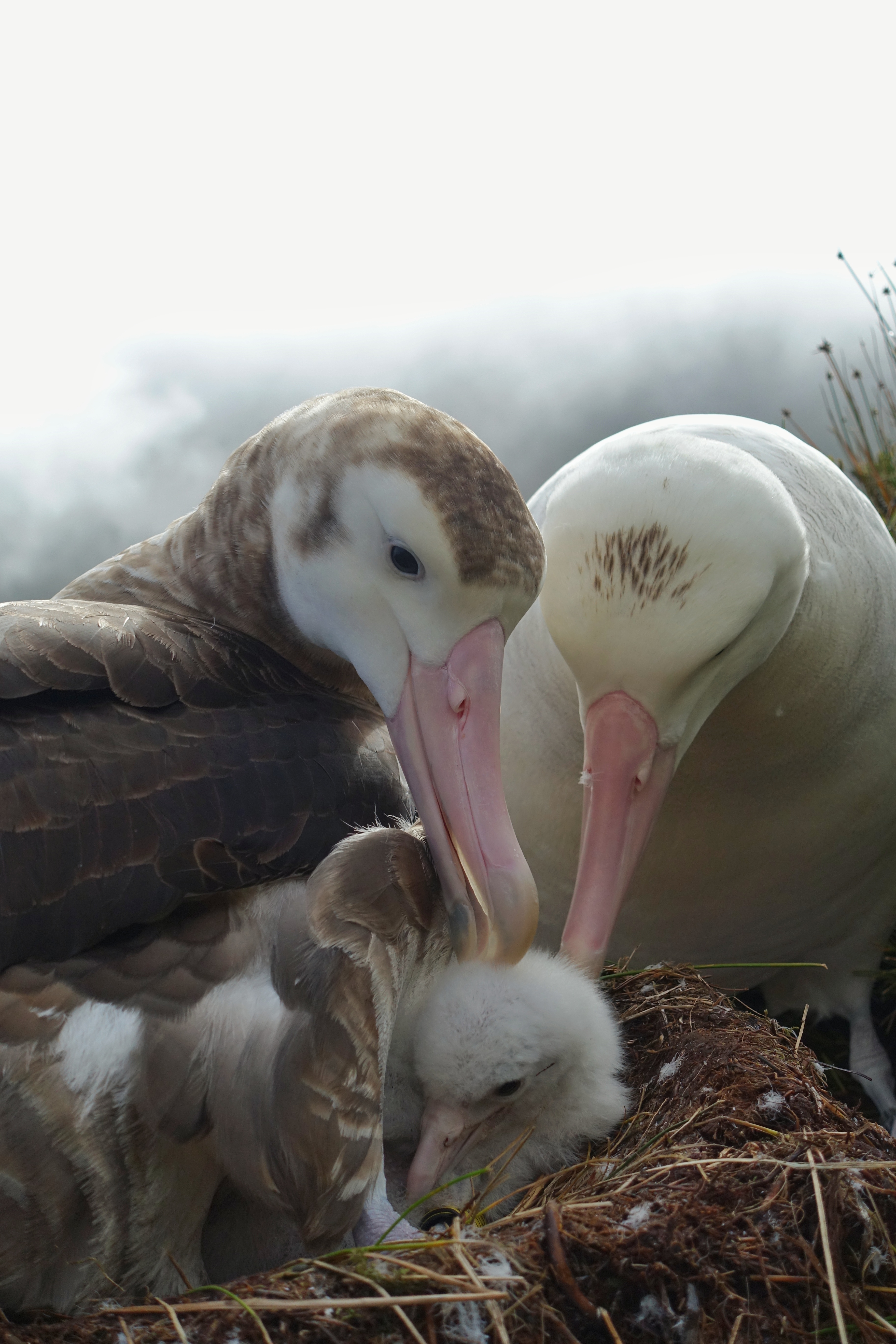
Tending their chick on a misty Gough day; the browner female is on the left
It would be another dream come true to use the skills I have learnt working on the Gough Island Restoration Programme on South Africa’s Mouse-Free Marion Project; another huge milestone project which if successful will contribute to saving the lives of millions of seabirds, including albatrosses, in the years to come.
Selected Scientific Publications:
Jones, C.W., Risi, M.M., Cleeland, J. & Ryan, P.G. 2019. First evidence of mouse attacks on adult albatrosses and petrels breeding on sub-Antarctic Marion and Gough Islands. Polar Biology 42: 619 -623.
Jones, C.W., Risi, M.M., Osborne, A.M., Ryan, P.G. & Oppel, S. 2021. Mouse eradication is required to prevent local extinction of an endangered seabird on an oceanic island. Animal Conservation 24: 637-645.
Jones, M.G.W., Techow, N.M.S., Risi, M.M., Jones, C.W., Hagens, Q.A., Taylor, F. & Ryan, P.G. 2020. Hybridization and cuckoldry between black-browed and grey-headed albatrosses. Antarctic Science 32: 10-14.
Risi, M.M., Jones, C.W., Osborne, A.M., Steinfurth, A. & Oppel, S. 2021. Southern Giant Petrels Macronectes giganteus depredating breeding Atlantic Yellow-nosed Albatrosses Thalassarche chlororhynchos on Gough Island. Polar Biology 44: 593-599.
Risi, M.M., Jones, C.W., Schoombie, S. & Ryan, P.G. 2019. Plumage and bill abnormalities in albatross chicks on Marion Island. Polar Biology 42: 1615-1620.
Michelle Risi, Durban, South Africa, 14 September 2021
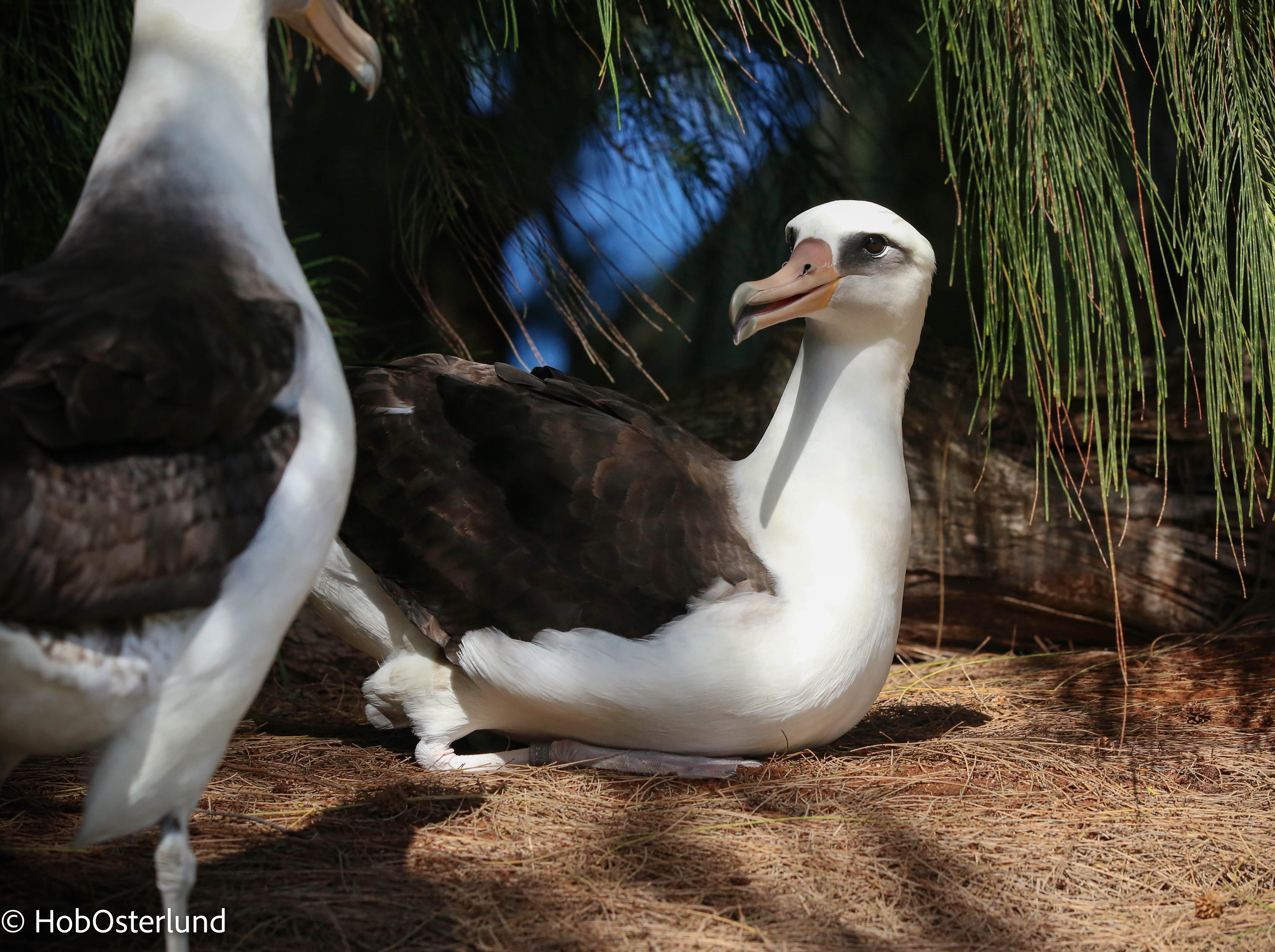

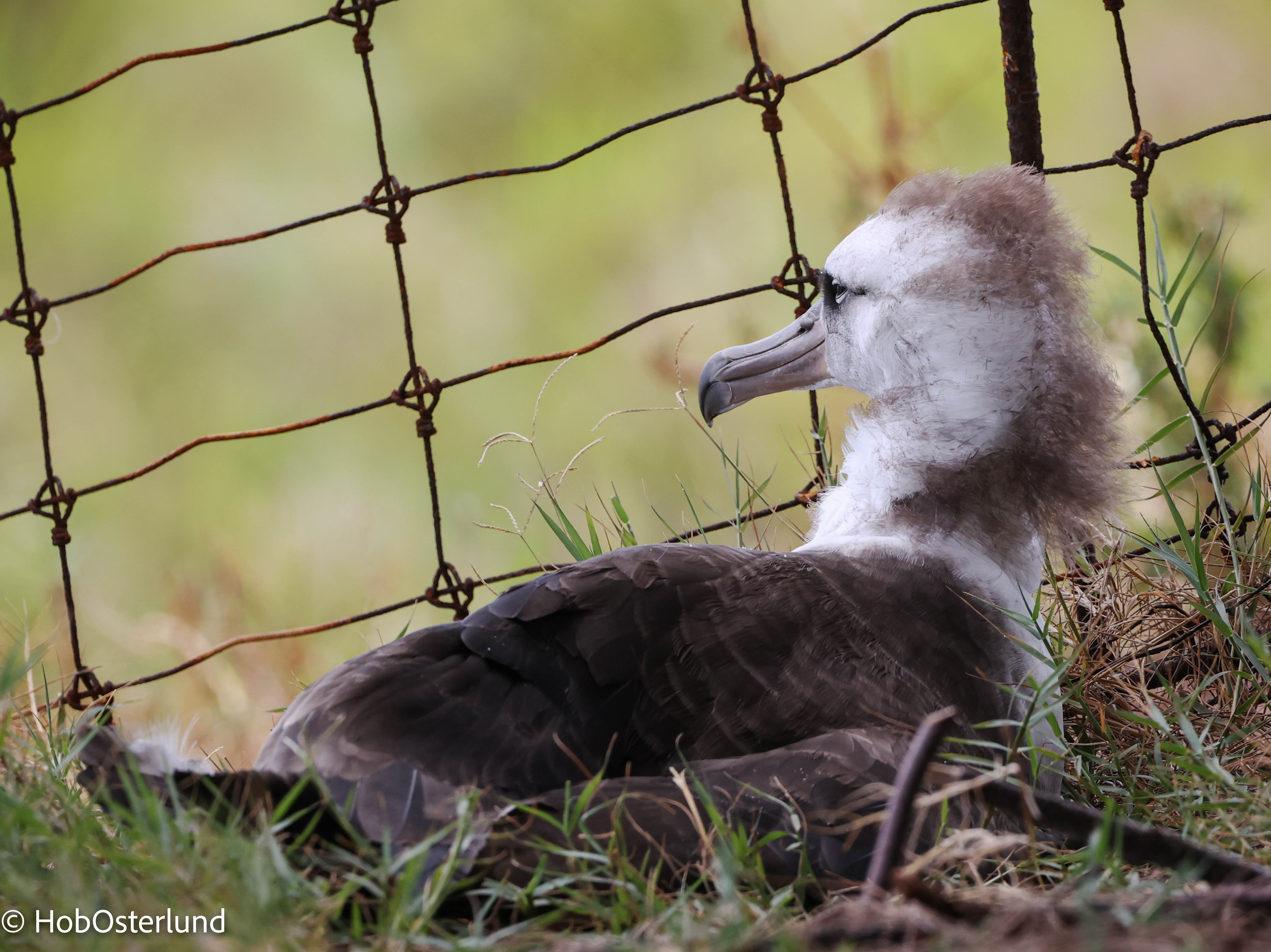

 English
English  Français
Français  Español
Español 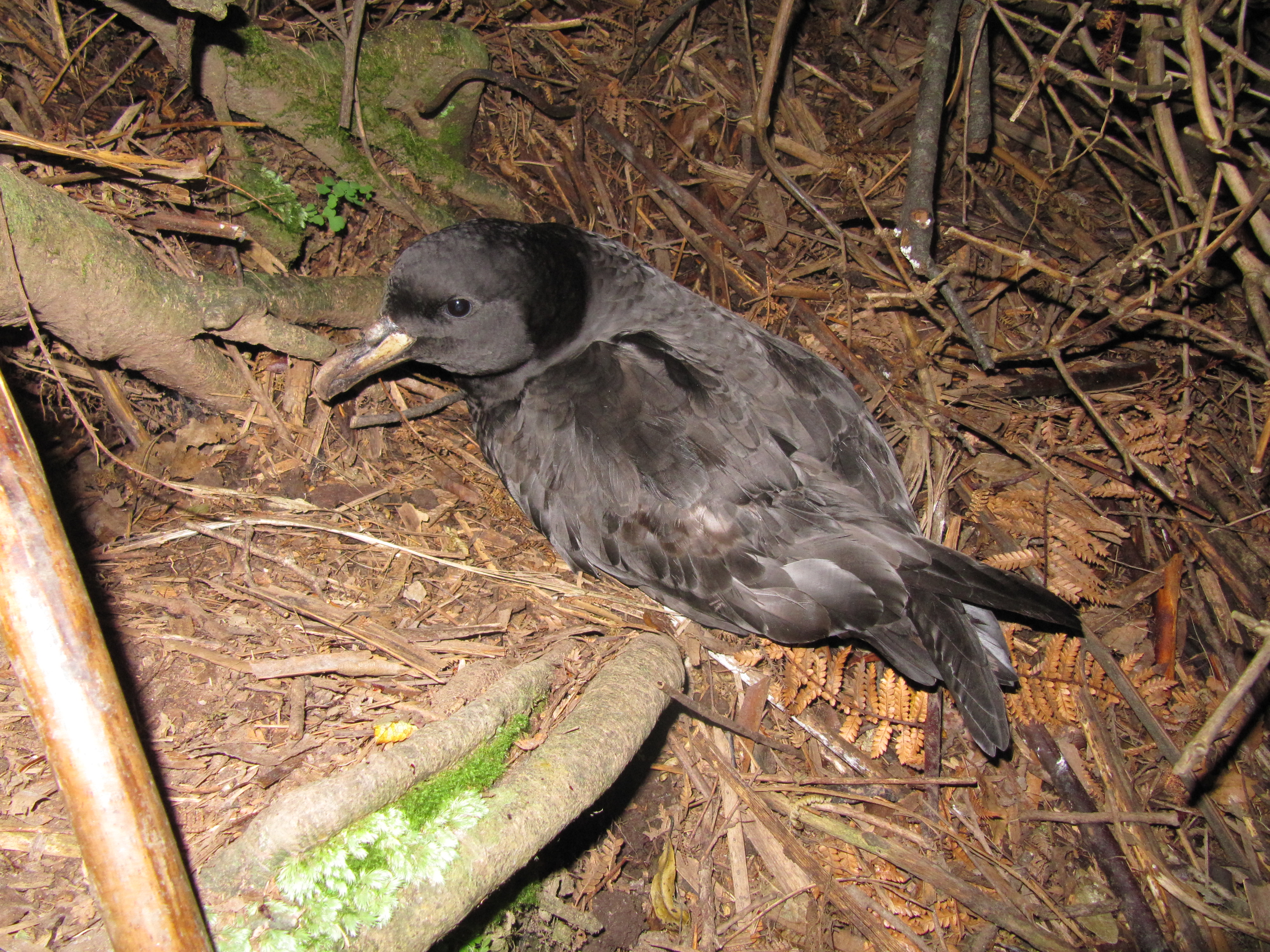

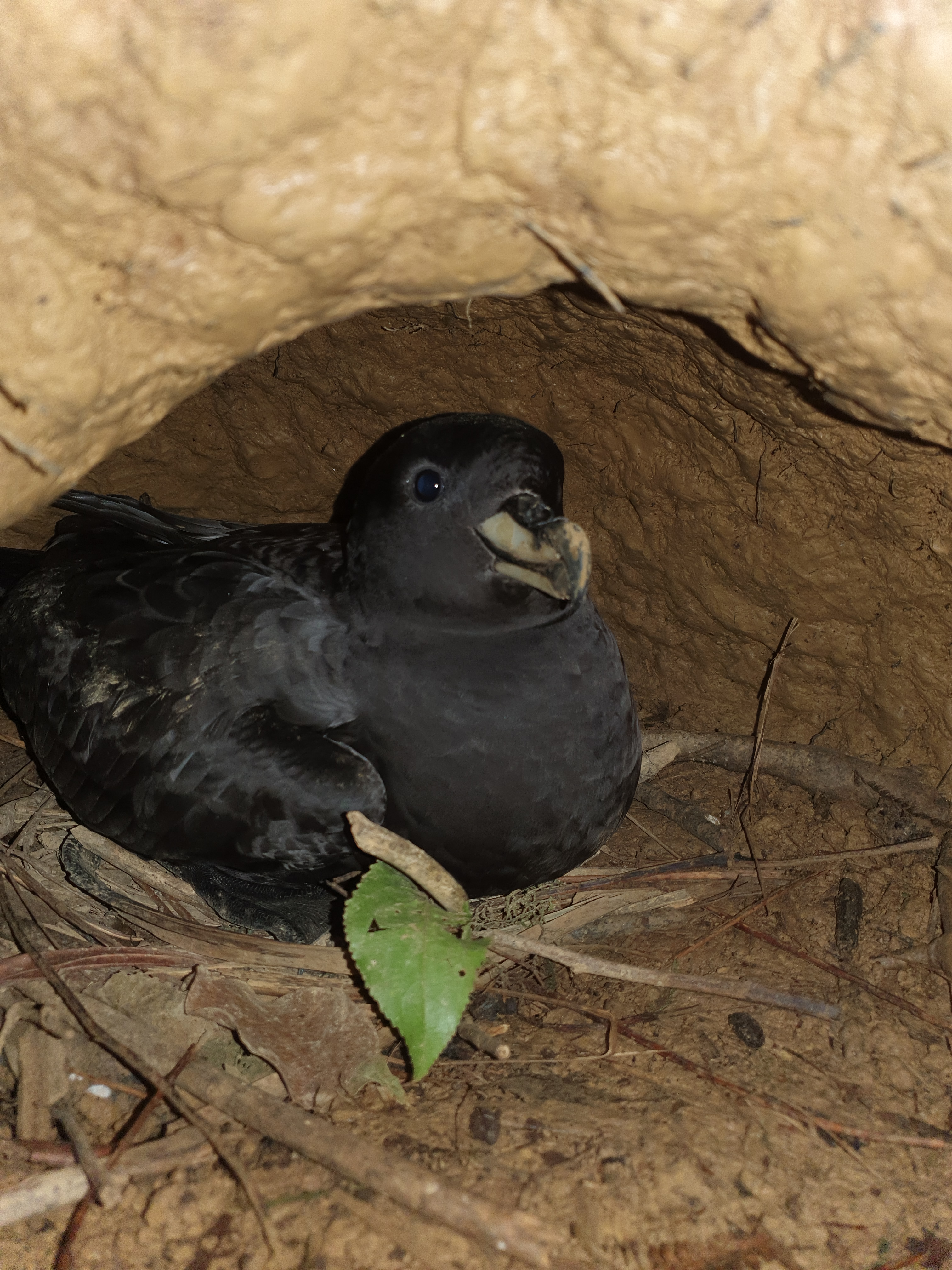
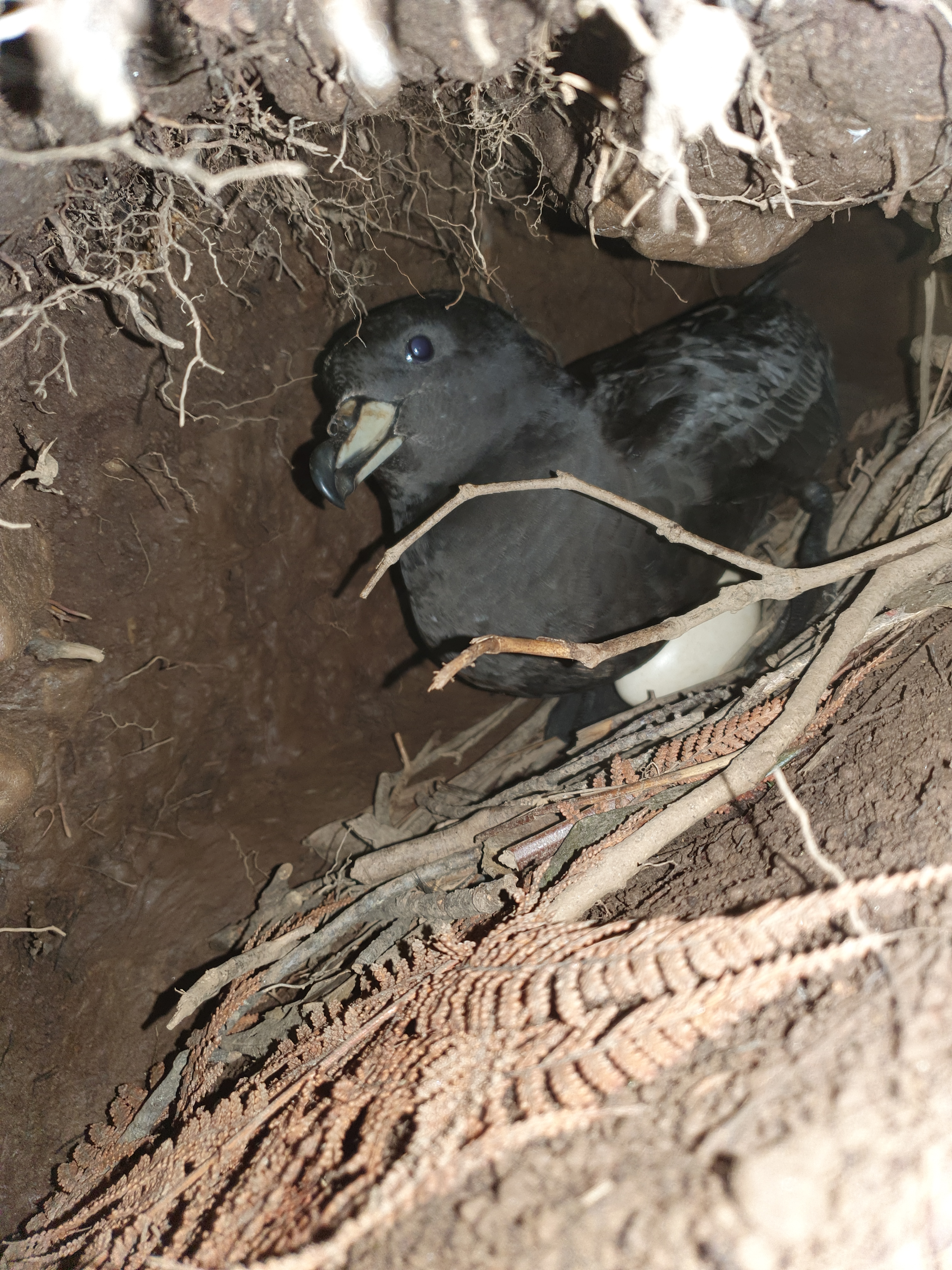
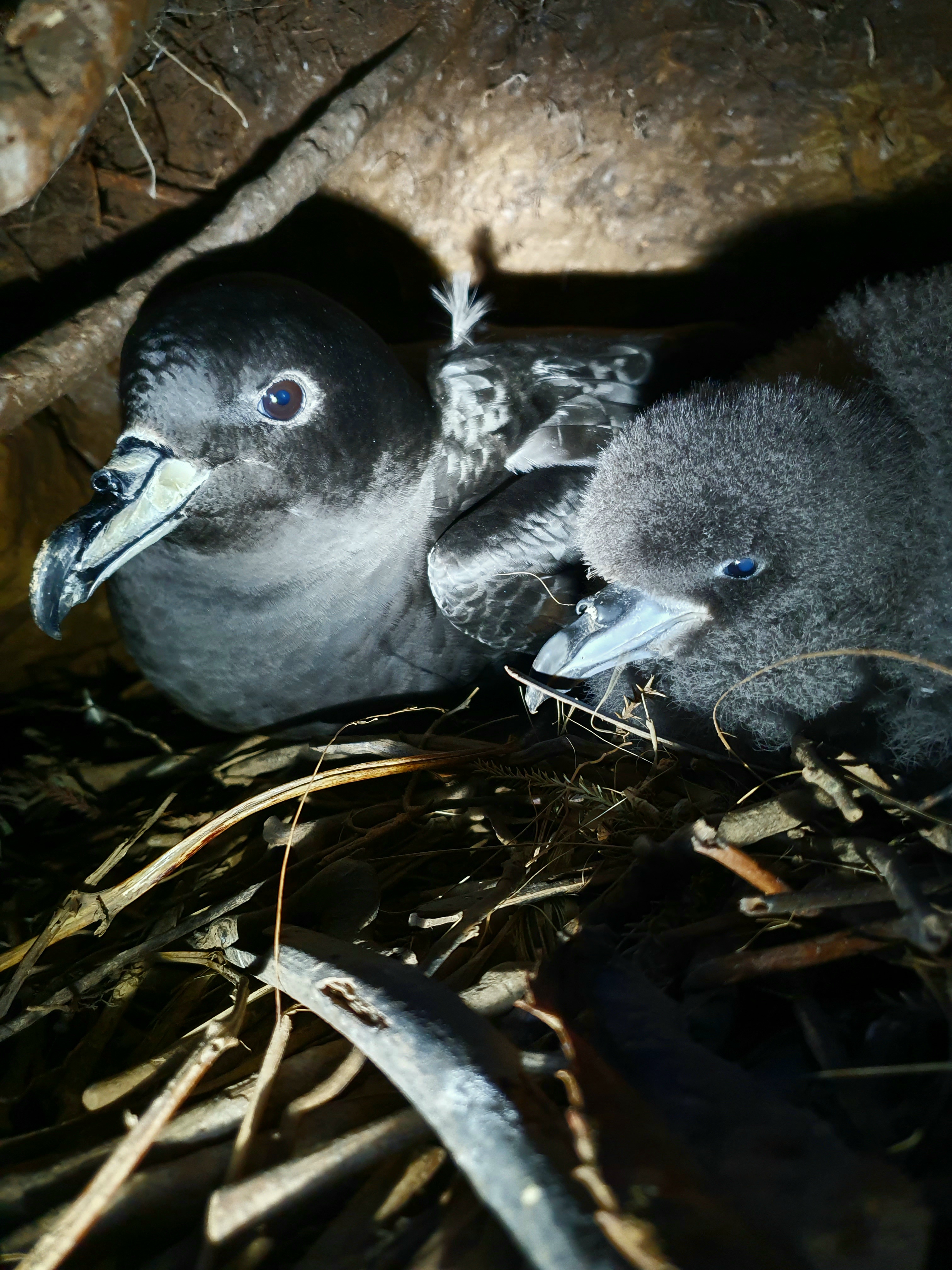
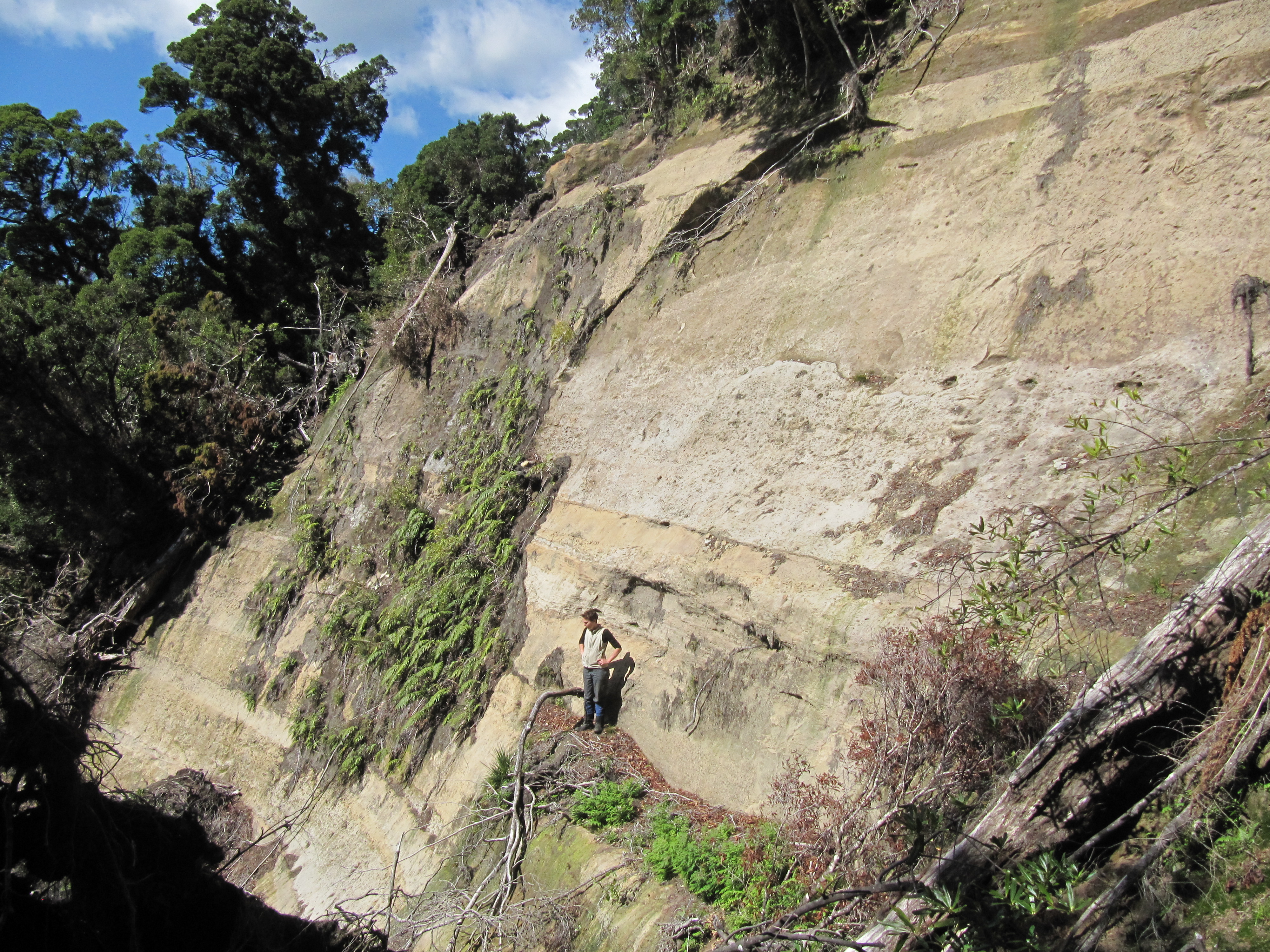

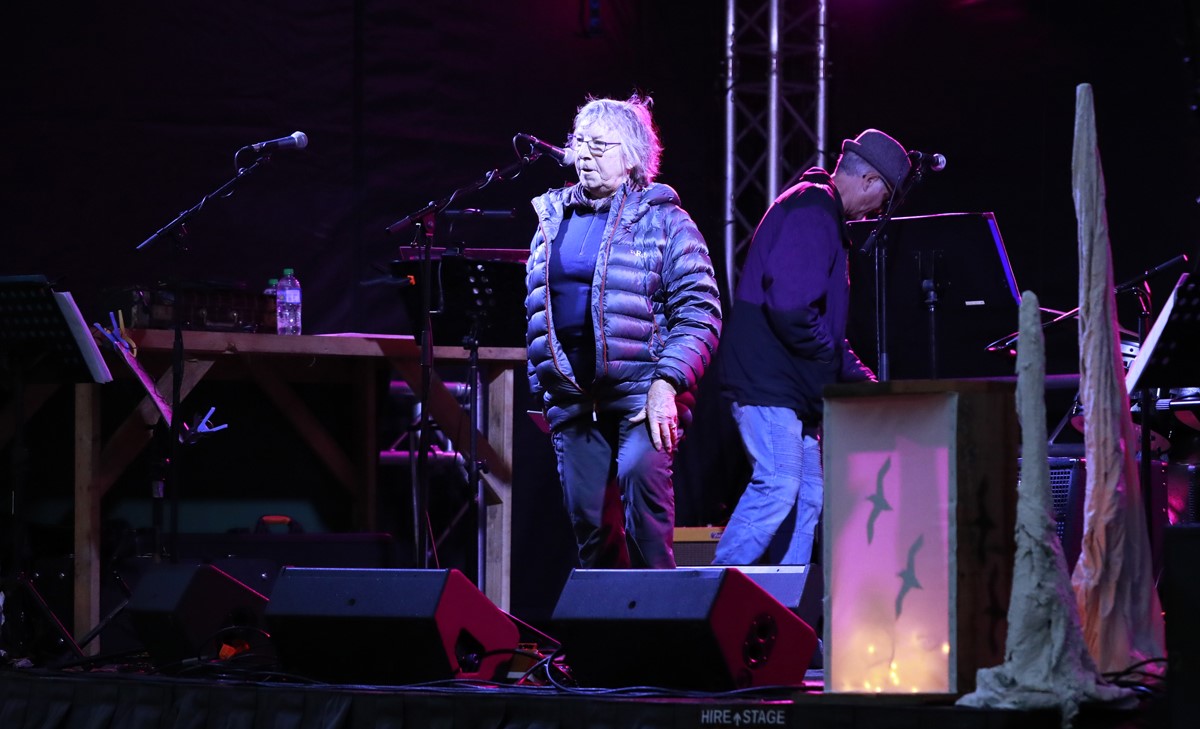







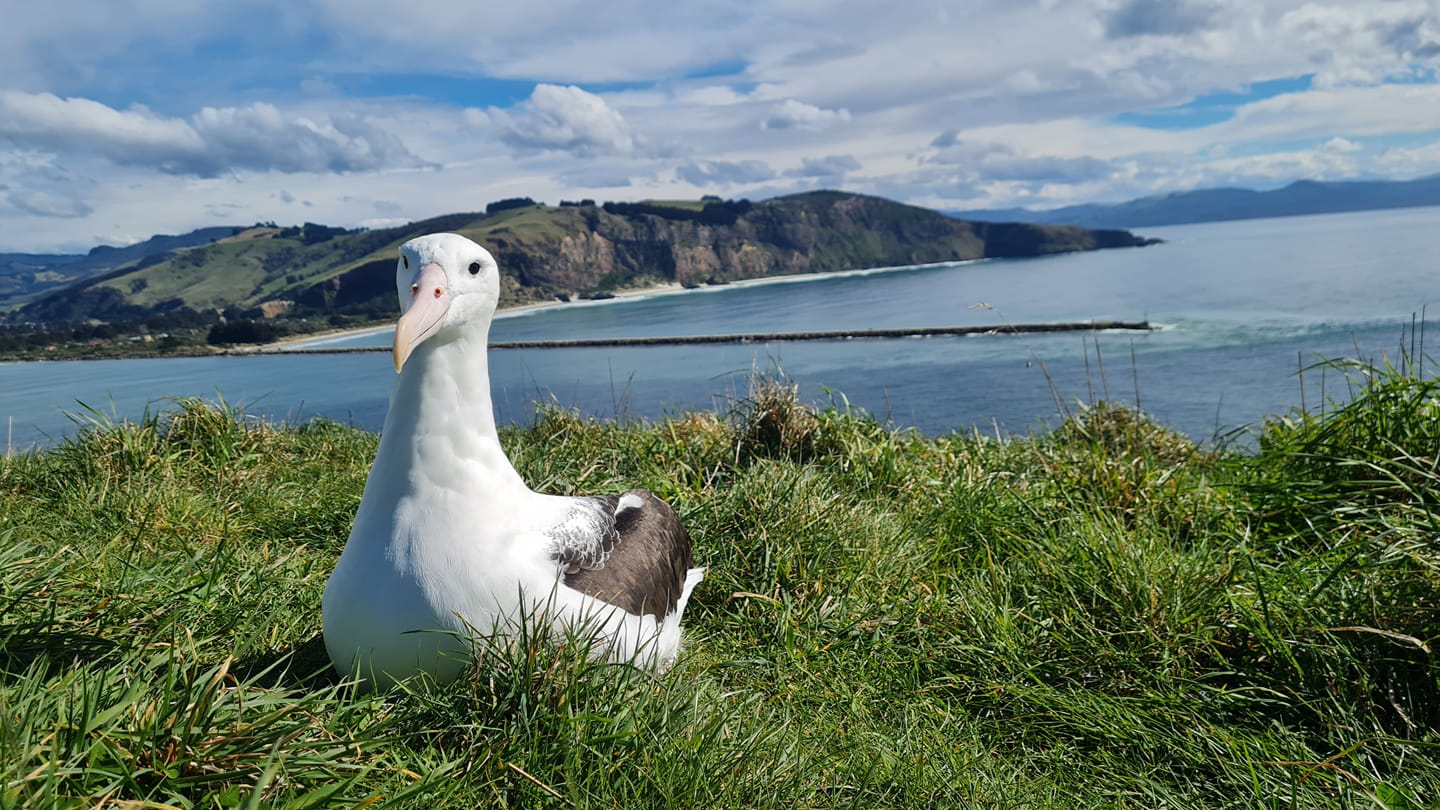 Back from travels. The four-year old YL; photograph by Theo Thompson
Back from travels. The four-year old YL; photograph by Theo Thompson
